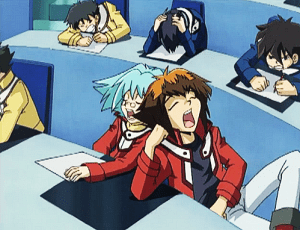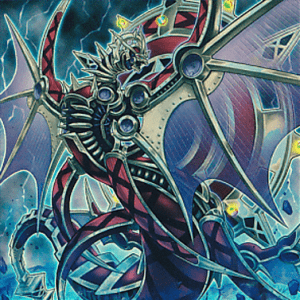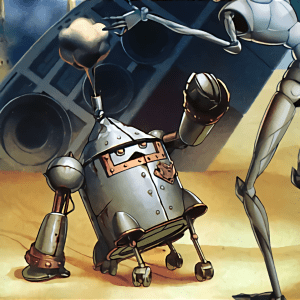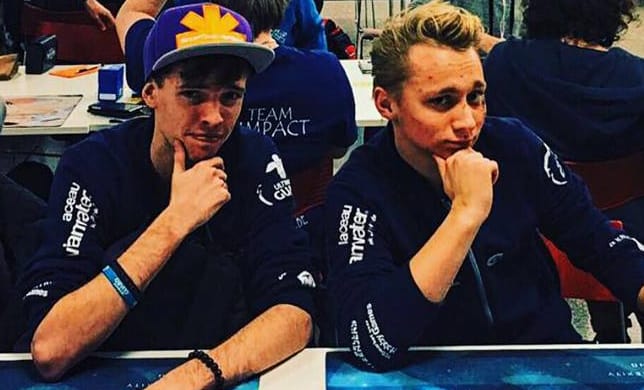Hey there Yu-Gi-Oh! community! Raphaël Neven and Joshua Oosters from Complexity Card Gaming here, to bring you an article on a very fun subject; A sleeper deck in our current format, Kozmo Artifact Demise. If you don’t know who we are, we are both Dutch National Champions with Joshua being the current National Champion.
Sleeper decks
Before we get into the Kozmo Artifact Demise deck, we’d first like to quickly introduce the concept of sleeper decks and why you would want to play them. A sleeper deck could be defined as a deck that can compete in the current metagame, but the masses have not yet picked up on this. There could be a variety of reasons for this.
 For example, the sleeper deck can be an older archetype which mechanics inherently have a good matchup against one or more of the most played decks in the field (for example; Infernoid vs ABC). People might not yet have realized this, or maybe underestimate the power of the Infernoid engine and therefore not consider the deck a viable option to play competitively. Or most newer player are not even aware of the Infernoid archetype since it has been off the competitive scene for a while. Another closely related example would be an archetype getting new (indirect) support in a new set. A possible example for this would be the release of Fairy Tail – Snow, boosting the Lightsworn archetype.
For example, the sleeper deck can be an older archetype which mechanics inherently have a good matchup against one or more of the most played decks in the field (for example; Infernoid vs ABC). People might not yet have realized this, or maybe underestimate the power of the Infernoid engine and therefore not consider the deck a viable option to play competitively. Or most newer player are not even aware of the Infernoid archetype since it has been off the competitive scene for a while. Another closely related example would be an archetype getting new (indirect) support in a new set. A possible example for this would be the release of Fairy Tail – Snow, boosting the Lightsworn archetype.
However, not only older decks can be sleeper decks. Sometimes new decks get a TCG release but people first overlook the potential of a deck. A decent example of this would be the Paleozoic Frog deck. The deck is currently one of the prime contenders in the format, but when the most recent set was released (including the release of its “Boss monster”, Toadally Awesome) most of the focus was on the new Metalfoes support and of course the ABC deck which had been released just a week before. Because of this Paleozoic was overlooked, before “name players” started topping events with the deck, proving it might actually be on equal grounds with Metalfoes and ABC.
Why you would want to play a sleeper deck?
Now, for the reasons YOU might want to play such a deck;
I am personally a big fan of playing sleeper decks. Playing them adds another dimension to the game for us. First of all we think it’s very fun to surprise your opponent with an odd deck choice, this can start a conversation with your opponent which you might otherwise not be having and you could be exploring new concepts of the game while doing so.
Playing, but mostly creating, sleeper decks also adds a different layer to the deckbuilding process. Since most sleeper decks usually have an anti-meta aspect this gives you a different outlook on the deckbuilding process. Most of the time your engine will be a bit weaker than the engines of the meta decks which you have to make up for by teching out the decks to still be able to consistently beat the other decks in the format. Of course it is important you have enough space in your deck to do so, while not compromising your engine. If this is not possible, it’s likely your deck will not be good enough to do well at a large-scale event.
Side Decking and Surprise Factor
From a competitive standpoint there are also upsides to playing sleeper decks. Chances are, because people will not be prepared for them, you will hardly have to worry about cards sided specifically against your deck. This does not mean people won’t side against you at all; If your sleeper deck is a backrow related strategy, most people WILL side in their twin twisters, so that’s something to consider while picking your deck.
Alongside with being unprepared to side against you, it’s also possible people will just not to be able to play against your deck. They don’t know what cards you are playing, don’t know the interactions of your deck, and sometimes not even your win condition. Because they don’t know those things, they won’t know what or when to stop you which also gives you an edge over playing an established deck against which most people have practiced before playing an event. If your opponent does not know how to play around certain cards in your deck (with Paleozoic for example, play around the grave effects by chaining non-trap effects) you will have a huge advantage, which could give you the edge over a more ‘’established’’ meta deck.
Now taking a ‘’sleeper’’ deck to an event can also backfire, this can happen because they are usually a little bit weaker than the mainstream meta decks, or you are not familiar enough with the deck, because it is new. This happened to me (Raphael) when I took Blue-Eyes to CCG London. Even though a lot of players where unfamiliar with the matchup, the deck was not as good vs the meta as I thought and the deck was not optimal. When your deck is only strong vs a part of the meta it can be a risk to play the deck. Another sleeper deck that did not go my way was Infernoid at YCS Liverpool. The deck has an amazing ABC matchup but my build lacked consistency and I had some non-ABC matchups which were very hard. This does not mean sleeper decks backfire more than they are successful, as Joshua just barely missed the top cut with a different version of Infernoids and they have done great in the past, like when Erik Christensen won a YCS going 16-0 with Infernoid and surprised the established meta decks.
a little bit weaker than the mainstream meta decks, or you are not familiar enough with the deck, because it is new. This happened to me (Raphael) when I took Blue-Eyes to CCG London. Even though a lot of players where unfamiliar with the matchup, the deck was not as good vs the meta as I thought and the deck was not optimal. When your deck is only strong vs a part of the meta it can be a risk to play the deck. Another sleeper deck that did not go my way was Infernoid at YCS Liverpool. The deck has an amazing ABC matchup but my build lacked consistency and I had some non-ABC matchups which were very hard. This does not mean sleeper decks backfire more than they are successful, as Joshua just barely missed the top cut with a different version of Infernoids and they have done great in the past, like when Erik Christensen won a YCS going 16-0 with Infernoid and surprised the established meta decks.
You can actually check out one of Joshuas’ feature matches at YCS Liverpool here!
Kozmo overview
While Kozmo variants (among them, Fire King and Demise) were a staple in the format just a few months ago, it seems the deck and any of its version have fallen off of the competitive scene now. This is truly a shame, since the deck is a lot of fun to play, and in our opinion could definitely still deliver you good results at higher level tournaments. Before we get into how this deck could perform well in the current format, we will first give you a quick overview how and why the deck was able to perform well in the past.
Introduction to the deck and previous results
(Joshua)For me it all started during (European) National Championchips format. The format back then, for those who don’t remember or do not keep track of the European metagame, was mostly BAPK, Monarch variants, as well as some Pendulum builds (this was before Sky Iris-Abductor.dek), the pure and Fire King Kozmo deck and Qliphort demise.
I was personally very intrigued by the design of card of demise, but didn’t feel like any of the decks at that time (mostly Qliphort and Counter Fairy) were inherently strong enough to consistently win without actually seeing Demise. Back in the day we were a big fan of the Fire King Kozmo deck but couldn’t get it consistent enough for my liking, so we decided to try a build with a minimal monster count that could abuse Card of Demise, while also adding cards like Pot of Duality to ensure I could consistently get Kozmo Tincan off. Much to my surprise this worked very well and I ended up winning Nationals with the deck.
Without seeing Card of Demise the deck could play a grind game with the Kozmo engine, but when you saw Card of Demise (pretty much at any stage in the game) this would always blow your opponent out. If you saw it early you could put up a field of Kozmo Tincan and 5 sets, and if you top-decked it later in the game you could get alot of advantage out of the card for basically nothing.
(Raphael) Of all the sleeper decks, Kozmo Demise was by far the most successful for me. I took Joshua’s deck to the European Championship in Berlin. The deck appealed to me because of my disappointing result with BA at our Nationals earlier that year. Kozmo would have an amazing matchup vs the Pendulum deck that was pretty popular and, unlike Burning Abyss, would not struggle vs Domain Monarch without an out for Domain. It went better than I expected. The Pendulum decks became almost auto wins and even the grind game vs BA was winnable, the deck could open extremely unfair with Tincan and Demise and rarely brick, leading to a Top 8 spot for me, when I finally lost vs BAPK, missing out on a Worlds ticket.
The next event was YCS Rimini, our first event while being part of CCG. I was almost set on BAPK but expected quite a lot of mirrors and the Ghost Reaper & Winter Che rries deciding games concerned me. Once again Josh his deck provided a good option, this time with Artifacts in the main deck, which helped vs BAPK and were even decent in the worst matchup, Extra Deck Monarchs. The artifacts also provided access to the extra deck, giving it more options. Once again the deck performed great and brought me a Top 16 spot after getting crushed by EDM. The consistency and having auto win opening in the form of Wincan + Demise, while without Demise still being able to play a very strong game made this deck great for those 10+ rounds. This also shows how the deck could adapt to different problems in the meta, which is important.
rries deciding games concerned me. Once again Josh his deck provided a good option, this time with Artifacts in the main deck, which helped vs BAPK and were even decent in the worst matchup, Extra Deck Monarchs. The artifacts also provided access to the extra deck, giving it more options. Once again the deck performed great and brought me a Top 16 spot after getting crushed by EDM. The consistency and having auto win opening in the form of Wincan + Demise, while without Demise still being able to play a very strong game made this deck great for those 10+ rounds. This also shows how the deck could adapt to different problems in the meta, which is important.
What makes the deck good today?
Simply put, normal summoning Kozmo Tincan and setting 5 backrow is still too much for pretty much every deck to deal with. However, realistically speaking this doesn’t happen every game. Against decks with a higher ceiling like Metalfoes, Tincan set 2 isn’t enough to stop them from going off. Which brings us to the Artifact part of the deck.
While in the current state of the meta a Tincan backed with a Call and a Strike might not be enough sometimes, there is a card which can single-handedly shut down most decks for an entire turn; Artifact Scythe. Resolving Artifact Scythe’s effect will in almost every match up shut down your opponent’s entire turn. This means you can kill your opponent on your next turn if you opened well, but can also mean you have the time to set up if didn’t open as good. But how do we get Scythe on the field?
Ofcourse you can just activate Artifact Sanctum to get this bad boy out, but because you are playing Kozmo it isn’t even that much of a problem to draw it. If you open just Tincan and Scythe, you have a 2/3 chance of being able to resolve Scythe your next turn (if you get either Kozmo Sliprider or Kozmo Dark Destroyer from Tincan’s end phase effect). This becomes a 3/3 chance if you have Call of the Haunted or Oasis of Dragon Souls! That is of course if your opponent doesn’t have a quickplay s/t removal ready.
Because the Artifact engine is so powerful this format we have also extended the engine to be able to make them live more often. Where in previous Kozmo Artifact builds it was common to just play 3 Sanctum and 2  Artifacts, we are now playing 3 Sanctums, 2 Scythe, 1 copy of both Artifact Beagalltach and Moralltach, and to top it all off 2 Artifact Ignition. This card is especially good because it serves three purposes in the Kozmo deck. You can use it as a plain Mystical Space Typhoon to make sure you get your own plays through. You can use it to pop your own set artifacts and disrupt your opponent that way. But you can also use it to pop your own Kozmotown if you have doubles, or really need to get to the Tincan, to get your own engine rolling.
Artifacts, we are now playing 3 Sanctums, 2 Scythe, 1 copy of both Artifact Beagalltach and Moralltach, and to top it all off 2 Artifact Ignition. This card is especially good because it serves three purposes in the Kozmo deck. You can use it as a plain Mystical Space Typhoon to make sure you get your own plays through. You can use it to pop your own set artifacts and disrupt your opponent that way. But you can also use it to pop your own Kozmotown if you have doubles, or really need to get to the Tincan, to get your own engine rolling.
But the synergy between the Artifact and the Kozmo engines doesn’t end there. Because Kozmo Sliprider is a level 5 and plays a prominent role in getting your Artifacts out, it also makes for easier Rank 5 plays. The rank 5 you will find yourself going into most of the time is Constellar Pleiades. The bounce effect of this XYZ is still pretty strong on your opponents turn, but there is actually a really broken interaction on your own turn with Pleiades. Because you should be playing at least 5 Call of the Haunteds, you will get this little “combo” off pretty often.
First you XYZ summon Pleiades using at least 1 Scythe as XYZ material. Then you bounce back your own used Call by detaching the Scythe. This makes sure you can abuse Scythe again in your opponents next turn. Ideally you should be able to do this twice (because Pleiades has two materials), thus being able to shut out your opponent from playing at least 3 turns in a row, which should be enough to find a way to also reduce their lifepoints to 0.
However, it’s not just the artifacts which make Kozmo a solid deck in the current format. One of the most commonly seen played cards right now is Dimensional Barrier, which just happens to do absolutely nothing against the deck. At most it can be used as a Breakthrough Skill when you do go into the Pleiades play. However, in Kozmo, Dimensional Barrier provides another powerful card as its stops your opponent from making an out for your Kozmo ships like Ignister Prominence, the Blasting Dracoslayer, Number S39: Utopia The Lightning or Number F0: Utopic Future. With both Barrier and Sanctum there is a pretty high chance that if you win the dice roll your opponent will not be able to play with his extra deck.
Also, the fact that Kozmo Dark Destroyer and Kozmo Forerunner are still untargetable floaters actually still makes them very hard to effectively get over for most decks. Even if Utopia the Lightning is legal now in the TCG, in this deck you should usually have enough backrow to prevent getting blown out by this card.
Weaknesses (and how to solve them)
For the last couple of paragraphs I have been describing this deck as if it’s the strong deck on the face of the earth, which is of course not true. It’s very important to realize the weaknesses of a deck, which is why I will describe some of them here, but also offer some ways to resolve those issues.
Foremost there is the weakness this deck has going second. You need to resolve your Tincan to really get going, and doing so in the end phase of the second turn of a duel can be too late or even impossible in the current meta. The deck is very normal summon reliant (except when you open up Emergency Teleport), so it’s hard to play through cards like Solemn Strike or Solemn Warning. This becomes even harder, if not close to impossible when those trap cards are backing up an ABC-Dragon Buster. Twin Twisters provides an answer for backrow but discarding in this deck can be awkward. Artifact Ignition is one of the best backrow-destruction cards for the deck as it doesn’t take a card from the hand, sets an Artifact monster and in some situations becomes a searcher by destroying Kozmotown.
Because this is a back row deck Twin Twisters will be sided against you and while they can be devastating, the artifacts make Twin Twisters weird because hitting an Artifact or Sanctum can cost your opponent a lot of advantage. While Cosmic Cyclone avoids triggering those effects there is also the possibility of hitting one of your Calls. So you summon a ship from grave and trigger its destruction effect. This shows us that standard side-decked cards won’t be so effective vs your sleeper deck.
Many people are afraid of the heavily sided System Down while they play this deck. It cannot be ignored that this card is indeed powerful vs your ships and also makes your graveyard empty, but it is not such a b lowout in comparison to a System Down vs ABC. Kozmo has a lot of ways to play vs from a System down in the form of Town, Kozmo Strawman and Oasis making your monsters Wyrm type.
lowout in comparison to a System Down vs ABC. Kozmo has a lot of ways to play vs from a System down in the form of Town, Kozmo Strawman and Oasis making your monsters Wyrm type.
Overall, Kozmo (Artifact) Demise has been the result of Joshua always trying to be hipster and the deck performed very well for us. The deck might evolve even further and can continue to adapt to the format. We hope this gives some insight in the possibilities that lay outside the meta, try Kozmo Wincan out for yourself and don’t be afraid to take a sleeper deck to an event!
Kind regards and until next time,
Joshua Oosters & Raphael Neven
– Complexity Card Gaming

